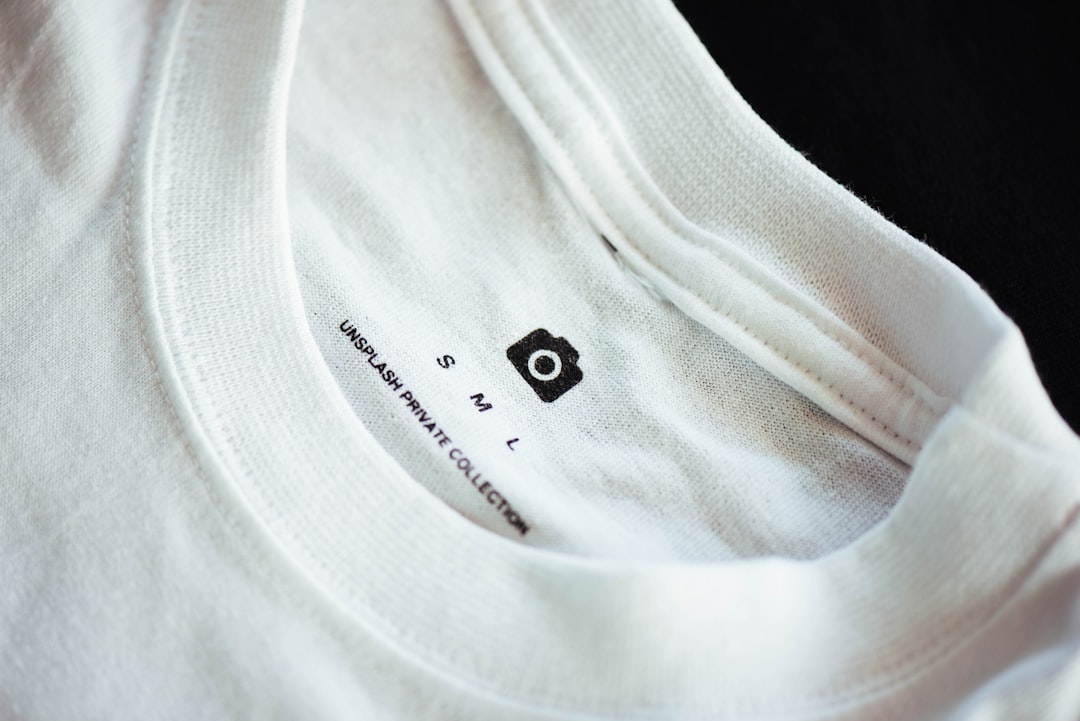

Engage prospects with a scan and streamline customer engagement with FREE QR code marketing tools by Sona – no strings attached!
Create a Free QR CodeFree consultation

No commitment

Engage prospects with a scan and streamline customer engagement with FREE QR code marketing tools by Sona – no strings attached!
Create a Free QR CodeFree consultation

No commitment
In today’s digitally driven world, QR codes have evolved from a novelty to a strategic powerhouse in bridging offline engagement with online action. For online retail businesses, QR codes represent a streamlined and surprisingly effective way to boost customer engagement, facilitate mobile commerce, and drive trackable conversions without the need for app downloads or complex setup.
As consumers increasingly expect seamless shopping experiences, QR codes allow retailers to meet customers wherever they are: on packaging, advertisements, receipts, store displays, and even social media. With the right approach, QR codes in marketing can guide shoppers to curated online stores, personalized offers, loyalty programs, and instant checkout pages, removing friction and accelerating buying decisions.
However, retailers often struggle to measure the impact of traditional touchpoints and lose high-value prospects who interact with offline materials but never make it into the CRM. Innovative QR code strategies can transform every physical interaction into a measurable digital signal, delivering actionable data for smart decision-making and closing the gap on missed opportunities. Practical frameworks and real-world insights will help online retail brands unlock meaningful omnichannel growth.

QR codes are revolutionizing online retail by connecting physical touchpoints and digital journeys to create measurable growth. Retailers have long faced frustration with analog methods such as printed brochures, catalog inserts, or paper coupons that limit both reach and conversion tracking. These static solutions make it easy to lose track of prospective buyers and nearly impossible to attribute revenue back to a specific asset.
Modern approaches leverage QR-enabled solutions to re-engage anonymous visitors and convert fleeting interest into measurable action. By placing thoughtfully designed QR codes on packaging, in-store displays, and receipts, brands can move customers smoothly from offline experiences to online offers and exclusive content. A shopper who previously might pocket a paper coupon and forget about it can now scan a code in the moment and land on a personalized offer, a curated bundle, or a one-click checkout page.
QR code management tools now streamline execution from dynamic code creation and journey mapping to CRM integration. With platforms like Sona QR, every scan can be treated as an actionable lead and a source of insight rather than a missed opportunity. The result is a disciplined approach that increases engagement while also making your marketing spend more transparent and accountable.

Online retail often struggles to bridge the gap between physical and digital shopping. Much of the engagement that happens in the real world cannot be measured with traditional methods. A prospect might admire a display, save a catalog page, or read product packaging at home, yet none of these actions appear in your analytics. This disconnect reduces campaign efficiency and makes it hard to allocate budget intelligently.
QR codes make offline-to-online engagement measurable and immediate. When paired with clear CTAs and relevant destinations, they remove unnecessary steps and encourage real-time action. The best part is that shoppers do not need to download an app or type a URL, which reduces drop-off and accelerates movement through the funnel.
For online retail specifically, QR codes turn high-intent micro-moments into measurable outcomes. A display in a partner store can become your best-performing acquisition channel. A catalog can convert into a shoppable experience. Packaging can serve as a help desk, a re-order button, and a loyalty portal all at once. For broader context, see how QR is transforming stores in this overview of QR in retail.

Different QR code formats serve distinct goals. While a standard link is a great default, certain objectives are better served by formats that automate an action, reduce data entry, or connect to native device features. In online retail, the most valuable formats are those that accelerate purchase, streamline support, or capture first-party data.
Dynamic QR codes are especially useful in retail because you can edit destinations after print, route users based on time or location, and run A/B tests on messaging. Sona QR supports all of these formats and centralizes management so your team can track performance and make updates without reprinting materials or reshipping packaging.

Retail brands often discover their biggest growth potential at the intersection of physical and digital experiences. Think about where customers already engage with your brand: while unboxing, browsing in-store displays, flipping through mailers, or seeing ads during a commute. These moments are high intent but historically untracked.
By placing QR codes at these touchpoints, you convert ambient interest into measurable action and guide shoppers to the next step. The key is to match the destination to the context. If a shopper is unboxing, offer help with setup and a loyalty bonus. If they are glancing at a window display, send them to a geo-targeted offer they can claim instantly.
Growth accelerates when every physical encounter is captured, measured, and reinforced with relevant digital messaging. A disciplined QR strategy ensures you collect intent signals from offline moments and turn them into revenue-generating actions.

Retailers frequently miss upsell or cross-sell opportunities when engagement signals are not captured or acted upon. QR codes let you turn those signals into immediate outcomes. The most effective use cases start from a common offline moment, then deliver a digital experience that advances the buyer journey.
When these actions are tracked and synced to your CRM, each scan becomes a trigger for timely, relevant follow-up. A customer who scans to view a fit guide but does not purchase can be retargeted with a size-specific offer. Another who scans to reorder can be nudged toward a discounted subscription that increases lifetime value.
Every QR code scan is a high-fidelity signal. It reflects intent, context, and timing that you cannot infer reliably from web analytics alone. If a shopper scans a code on a refill package at 8 p.m. on a Sunday, you know what they need and when they are likely to act. By distributing multiple QR codes across touchpoints and labeling them correctly, you can automatically build segments that fuel precision remarketing.
This approach transforms offline interest into structured data inside your marketing stack. Distinct codes can identify where customers encountered your brand, which product they considered, and whether they were in pre-purchase or post-purchase mode. From there, targeted nurture and retargeting become straightforward.
With Sona QR powering your codes and Sona supporting attribution and activation, each scan becomes a data-rich entry point into your funnel. For follow-up tactics, see Sona’s Playbook intent-driven retargeting for practical segmentation and activation steps.
QR codes are more than convenient links. They serve as connective tissue across print, packaging, physical environments, and digital campaigns. When integrated properly, they reduce friction for shoppers and provide the measurement layer that traditional offline channels lack.
In an online retail context, QR codes enhance everything from seasonal campaigns to always-on loyalty programs. They turn window shoppers into site visitors, first-time buyers into subscribers, and passive recipients of mailers into active participants in your brand’s story. They also centralize data collection across channels that previously operated in silos. For planning inspiration, review these practical QR marketing strategies.
QR codes serve as the offline onramp to your digital marketing engine, and they unlock a new layer of measurable data across channels that were once opaque. With a centralized platform like Sona QR, you can manage codes, monitor performance, run A/B tests, and sync scan data directly with your CRM and ad platforms for a truly connected strategy. To understand measurement across non-digital channels, read Sona’s blog on offline attribution.
Start by defining the business outcome you want to achieve and the offline moment where a QR code can remove friction. In online retail, strong use cases include scan-to-reorder for consumables, scan-to-join-loyalty at checkout, scan-to-activate-warranty post-purchase, and scan-to-claim-limited-time offers at pop-ups or window displays. Align each use case with a clear KPI, such as email capture rate, reorder conversion rate, or add-to-cart lift.
Consider the audience context and the content that will be most valuable in that moment. If you are targeting lapsed customers through a postcard, send them to a personalized discount page. If you are engaging new prospects at an event, lead with a style quiz that builds a high-intent segment and awards a small incentive at completion.
Choose static or dynamic codes based on your need for tracking and flexibility. Static codes are suitable for evergreen destinations, such as a brand homepage or a general help center. Dynamic codes are trackable and editable, which makes them ideal for campaigns that evolve over time, regional targeting, and A/B testing of destinations or CTAs.
In online retail, dynamic codes pay off quickly because you can reuse the same printed material while updating the offer. If a holiday promo ends, redirect the code to a new seasonal landing page without reprinting. Sona QR supports both static and dynamic codes and makes it simple to organize them by product line, channel, or campaign.
Design influences scanning behavior and conversion outcomes. Use high-contrast codes, adequate white space, and a size that matches viewing distance. Style the code frame to match your brand and include a concise, benefit-driven CTA near the code so people know what they get after scanning.
Test across devices and environments to ensure fast scanning and legible results. Poor scannability is a common failure point. Check performance on iOS and Android, from different angles and lighting conditions, and on various print materials such as glossy packaging or matte postcards.
Roll out codes where your audience already engages. Start with packaging, inserts, receipts, and store signage. Expand to direct mail, OOH placements, pop-ups, and influencer kits. Tailor the destination to each environment. A code on a street-level poster should lead to a mobile-first, low-friction experience like a one-tap offer claim, not a long-form survey.
Plan a cadence for refreshing offers and creative. Seasonality, product launches, and inventory levels can all inform what your QR destinations should emphasize in a given week. With dynamic codes, you can adjust without the sunk cost of reprints.
Measurement closes the loop from scan to revenue. Instrument your codes with UTM parameters and configure your analytics to track scans, sessions, conversions, and post-scan behavior. Send scan events to your CRM or CDP so that they contribute to lead scoring, audience segmentation, and automated workflows.
Analyze performance by channel, creative, time of day, and geography. Run A/B tests on CTAs, landing pages, and incentives. Shift budget toward high-performing placements and retire assets that underdeliver. Platforms like Sona QR and Sona.com provide unified dashboards, identity resolution, and multi-touch attribution so you can see which codes and campaigns are truly driving revenue. For modeling guidance, review Sona’s article on multi-touch attribution.
Lack of reliable data hinders online retail marketing. Valuable engagement like scanning a product code often fails to connect downstream to purchase and loyalty metrics, which reduces attribution accuracy and obscures ROI. If you stop at counting scans, you miss the larger picture of how QR-driven interactions influence revenue and retention.
A closed-loop analytics approach fixes this by tying every scan to downstream actions and customer profiles. Your goal is not simply to log a scan but to understand its role within the buyer journey: did the scan lead to an email capture, a cart add, a purchase, or a repeat order one week later? With the right stack and processes, you can answer these questions confidently.
Sona QR captures real-world engagement with reliable scan tracking and device-level insights. Sona.com connects those signals to your broader funnel using buyer journeys and attribution models. Together they help you quantify the impact of QR campaigns and manage them as a performance channel rather than a novelty.
Many QR programs underperform because they use generic CTAs, unclear destinations, or disconnected follow-up. Success requires clarity, relevance, and automation. The physical medium matters too: a glossy box demands different design choices than a matte postcard.
Select tactics that align with your most common offline touchpoints and your marketing stack. If packaging is your primary canvas, focus on scannability, support flows, and reorder convenience. If direct mail is a major channel, lean on personalized offers and tag your scans carefully for attribution.
Creative deployment ideas include adding QR codes to eco-friendly tote bags that unlock rotating rewards, sustainability stories, or local pickup perks. Another is to include a peel-off QR sticker on refillable containers that links to a one-tap reorder page and tracks when customers are running low. Explore more concepts in these QR marketing ideas and consider using stickers and labels for on-the-go engagement.
QR codes are more than a shortcut. They are a strategic lever for online retail. When you deploy them with purpose, every product, package, and print surface becomes a digital entry point and every moment of interest becomes a moment of action. The result is a smooth customer journey that blends physical and digital interactions while producing data you can use to optimize in real time.
Here is the enduring value for retail teams. You gain instant engagement where customers already are, a connected experience that moves people from awareness to purchase, and a stream of actionable data that turns each scan into a signal for growth. With Sona QR and Sona.com, you can generate and manage dynamic codes, attribute revenue at the asset level, and sync insights with your CRM to scale what works.
Now is the time to put QR codes to work across your retail ecosystem. Start with one or two high-impact use cases, measure everything, and iterate quickly. As you refine your approach, you will find that QR codes do not just facilitate transactions. They build relationships, reveal intent, and create a performance loop that accelerates profitable growth. Start creating QR codes for free.
QR codes have transformed online retail from static product listings into interactive, measurable engagement channels. Whether it’s attracting new customers, enhancing the shopping experience, or driving repeat purchases, QR codes turn every touchpoint into a seamless gateway for instant, mobile-friendly actions that capture valuable data in real time. Imagine knowing exactly which promotions or product tags are converting browsers into buyers—and being able to optimize those campaigns instantly.
With Sona QR, you can create dynamic, trackable QR codes in seconds, update campaigns on the fly without costly reprints, and link every scan directly to sales performance. No more guessing which strategies work—just smarter, more effective marketing that connects your offline and online channels effortlessly. Start for free with Sona QR today and transform every scan into a loyal customer or a completed sale.
QR codes improve online retail by connecting physical touchpoints like packaging and receipts to personalized online offers, loyalty programs, and instant checkout pages, creating seamless, frictionless shopping journeys.
Integrating QR codes boosts customer engagement, enables mobile commerce without app downloads, provides measurable offline-to-online data, allows dynamic content updates, reduces operational costs, and enhances marketing attribution and optimization.
QR codes placed on physical assets guide shoppers directly to curated online stores, product pages, or promotional offers with one scan, reducing friction and accelerating buying decisions that drive traffic to online stores.
Successful examples include scan-to-reorder on receipts and packaging, QR codes on packaging linking to tutorials and loyalty portals, post-purchase inserts for reviews and referrals, and QR codes at events offering exclusive access or promotions.
Retailers track scans with context such as time, location, and device, use UTM parameters for attribution, sync scan events to CRM and marketing platforms, analyze performance by channel and timing, run A/B tests, and attribute revenue through multi-touch models to optimize strategies.
Use Sona QR's trackable codes to improve customer acquisition and engagement today.
Create Your FREE Trackable QR Code in SecondsJoin results-focused teams combining Sona Platform automation with advanced Google Ads strategies to scale lead generation

Connect your existing CRM

Free Account Enrichment

No setup fees
No commitment required

Free consultation

Get a custom Google Ads roadmap for your business






Launch campaigns that generate qualified leads in 30 days or less.
